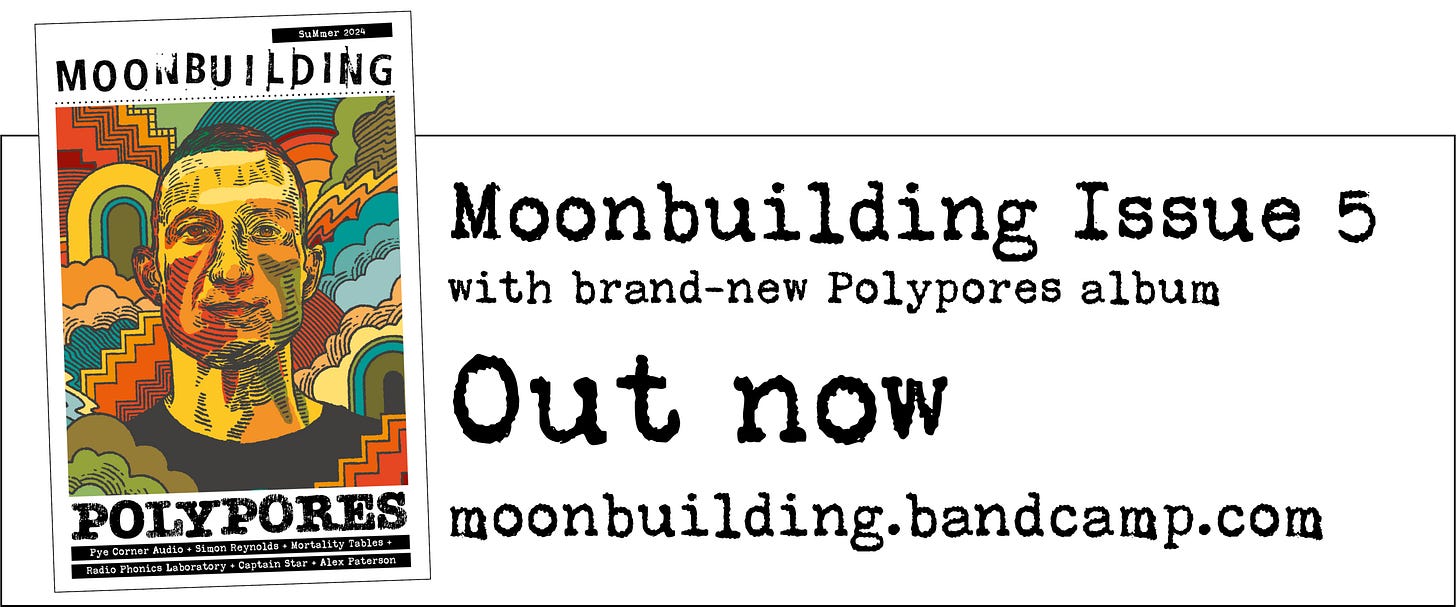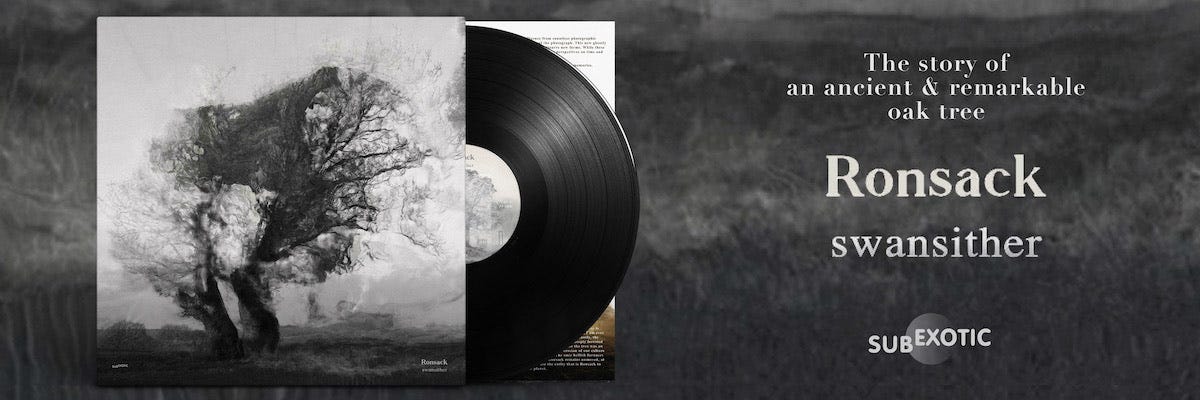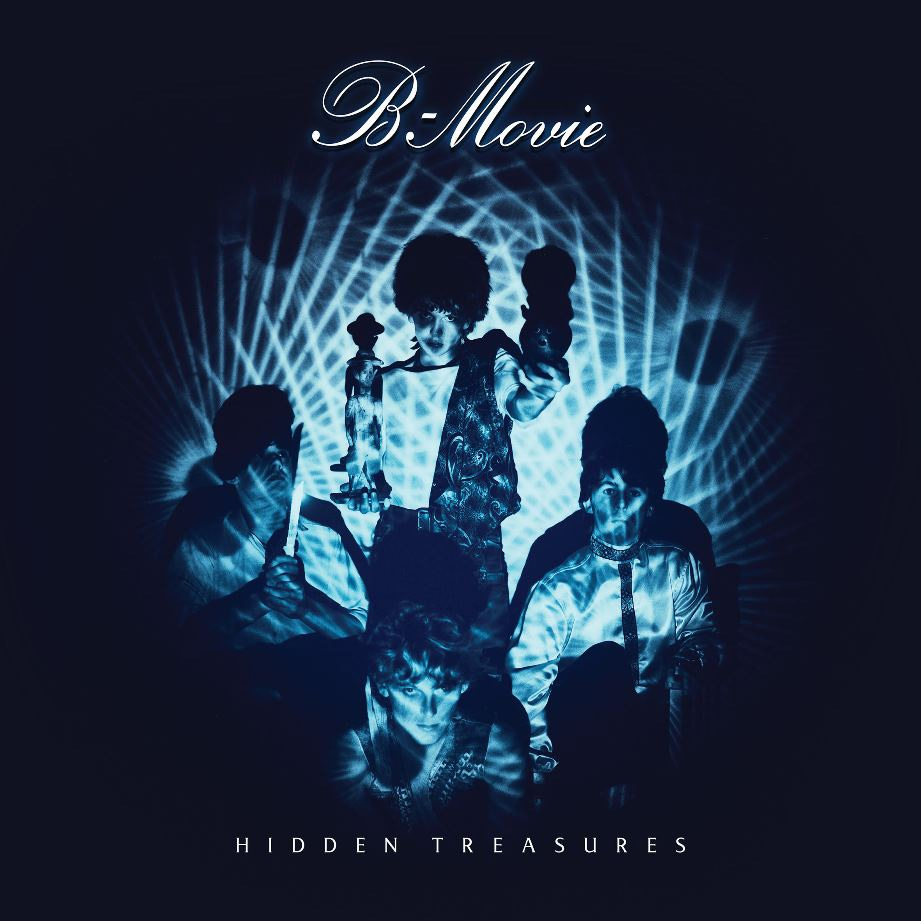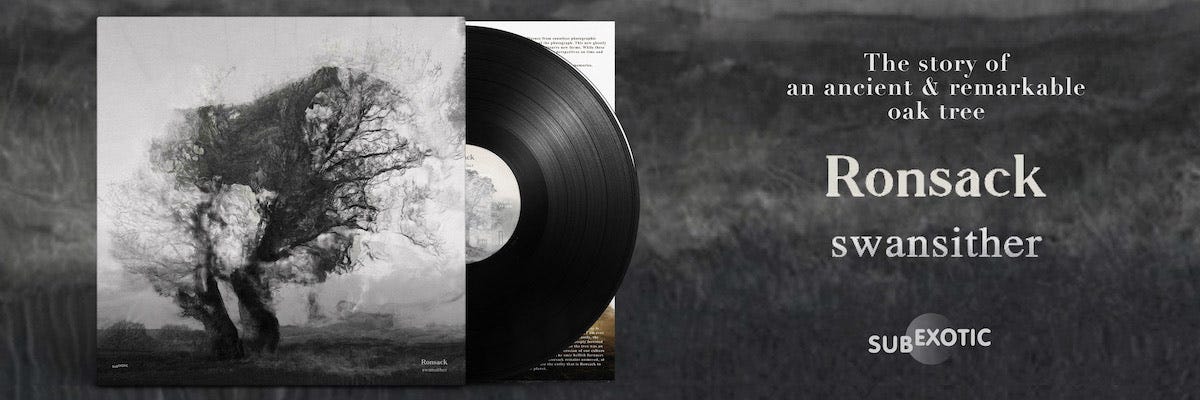Issue 68 / 30 May 2025
Your essential DIY electronic music beano – Track Of The Week: Formal Sppeedwear + Good Stuff: Swansither, Gordon Chapman-Fox, B-Movie, Dalham double-bill + Joe Meek book + more
I’ve been staring at the pile of books on my desk that I’ve not been getting round to reviewing for a while now. The reason is I’ve been reading Darryl W Bullock’s mighty tome on Joe Meek and it’s taken me a while. I’m happy to report it’s excellent stuff, my full thoughts are below somewhere. All of which means I can move on to the next book, which I’m equally hopeful for as it’s Arthur Baker’s ‘Looking For The Perfect Beat’. Expect my review of that before the summer’s out eh?
Housekeeping time. Moonbuilding Weekly is only free because of our brilliant advertisers. June is looking pretty quiet though. If you’d like to see you wares paraded in front of 1,400 or so very attractive electronic music fans with impeccable taste and wallets full of cash to spend, details of how to advertise are right here.
Neil Mason, editor
moonbuildingmag@gmail.com
Issue 68 Playlist: Listen on BNDCMPR
Advertise: Your ad here
Support Moonbuilding: The fighting fund
***ADVERTISE HERE***
email moonbuildingmag@gmail.com
FORMAL SPPEEDWEAR ‘Wait (Hatched Gets a New Hide)' (Melodic)
Photo: Dean Quinn
Well this is great. Stoke-On-Trent three-piece Formal Sppeedwear first blipped on our radar a year ago with their self-titled debut EP. Back then they talked about influences. Yellow Magic Orchestra, they said, Neu! and Devo, Eno’s Oblique Strategies, Conny Plank’s “experimental recording techniques”, ‘Scary Monsters’ guitar lines, Numan’s 80s basslines. These are well-round individuals, right? Said it before, but being on Melodic is never a hindrance either. It’s a label whose releases I’ll always listen to just because.
You can’t help hearing Talking Heads on the debut EP, especially in the jerky vocals of Beck Clewlow. There’s a track called ‘The Line’, which I thought echoed ‘And She Was’, but it’s something else, can’t quite put my finger on it. I will though. And indeed that Talking Heads vibe turns up on the new single, ‘Wait (Hatchet Gets A New Hide)’. “It's a dancefloor tyrant that gleams with early NYC rap synths, city-pop flourishes and first era funk-punk split-panned guitars and an unrelenting array of found-sound percussion parts,” say their people. Wow eh?
They’re not overselling it. That description is great, the single sounds great. That locked-down groove, the funky guitar like The Higsons used to do, a proper no-wave dancing bassline. Great, great and great. It’s “an erratic subversion of the band’s disco inclinations” their people add. I love anyone inclined to disco. They also say it was written “almost to completion” on a Tascam 488 Portastudio, a mighty fine 8-track cassette recorder, that’s proper DIY. I also like that every member is listed as playing synthesisers… Beck Clewlow (bass, vocals, synthesisers) Charlie Ball (guitar, synthesisers) and Connor Wells (drums, guitar, synthesisers).
I like these people. They’re Moonbuilding kind of people.
formalsppeedwear.bandcamp.com / melodicrecords.bandcamp.com
Got an upcoming release? We’re all ears. Email moonbuildingmag@gmail.com
Words: Neil Mason
GOOD STUFF #1
SWANSITHER ‘Ronsack’ (Subexotic)
It has been a little while since we’ve heard from Tom Kennedy’s Swansither, it’s been almost a year in fact since the extended edition of ‘The Waken’, which came with a hand-cast bronze-finish sleeve. Yup, that one. The thing with Swansither is you can be rest assured plenty of thought has gone into the final product. The artwork for ‘Ronsack’, while not cast from anything, is very striking. It’s an image of a large, old tree that at first glance looks like it could be an oil painting. Looking closer it’s a photograph that’s been blurred, smudged, kind of twisted. The image is by Mick “Conflux” Coldwell, who produced a series of manipulated images as well as a film that was shown at the Belgrade Film Festival in 2024. As you tend to learn with anything Swansither does, there is a method to the madness. So this is not just any old tree, right? Right.
Ronsack is an ancient oak that stands high on a ridge in the Shropshire countryside overlooking Tom’s farm. The tree is old, so old it featured in the Domesday Book. “It is at least one thousand years old,” says Tom. “I imagine it as a silent witness to some 40 generations of humanity, the changing landscape, Civil war and, most importantly, the Industrial Revolution that began in Coalbrookdale, barely a stone's throw away, and changed the world forever.” Which is pretty remarkable when you think about it. And think about it Tom does. He talks about how, through all of that, Ronsack remains unmoved, at the edge of the field. “For now, it is my responsibility to ensure the tree survives through my lifetime and beyond. So in this album I want to use the entity that is Ronsack to explore the passing of deep time, changing of society, loss of innocence, industrialisation, and the future of the planet.”
You know, the big stuff. I’ve said this many times before but it fascinates me how instrumental music can be about something. With vocal-led tracks you have the lyrics to express feelings, emotions, subject matter, but with instrumental music you just have, well, the music. Like Loula Yorke’s work, Tom’s music benefits greatly from having notes you can listen along with, and the notes here are excellent as he talk us through the local history the tree has overseen. There’s the folklore tales in the bubbly ‘Glattering Gat’ and gentle slow-build of ‘Last Giant’, the former a portal on Wenlock Edge leading to the Faerie Kingdom, the latter a very old, very dead volcano, created in folklore by a giant. ‘The Coal Brook’ is a beautiful piece of work that shimmers like the body of water that started the Industrial Revolution when large quantities of smelting coke were discovered on its banks.
I love the fizzing electrical buzz of ‘Bedlam Furnace’, which is where the coke discovered by Abraham Darby on the banks of the Severn burned day and night in one of the very first blast furnaces making iron at Coalbrookdale. Darby was quite a man. He took over his father’s ironwork aged 18 in 1768 and was on a mission to improve the lives of his workforce – he bought up farms to grow food for them, built housing, paid higher wages, he’s well worth reading about. There’s a lot of burbling synth work here, which I really like. The opening title track has a growling bassline keeping time while frothy arpeggios swirl around it, almost swaying the wind, like the tree, “the sky zooming past endlessly through night and day, year by year. Leaves shivering”. Wonderfully thoughtful work as always from Swansither.
GOOD STUFF #2
GORDON CHAPMAN-FOX ‘Very Quiet Music To Be Played Very Loudly’ (Lunar Module)
Here we go then. This has been some time in the making, two years in fact, but finally we get the debut release on Castles In Space’s all-new Lunar Module CD imprint and, of course, they’re kicking off with something a little bit special. This year is very much the year of fresh thinking when it comes to releasing new music. quiet details kick started a new wave of how artists release music when they launched their monthly CD series featuring work from the ambient world’s good and great, all producing an album inspired by what quiet details means to them. Loula Yorke started to release her excellent monthly mixtape and most recently Jo Johnson has been recording and releasing tracks each month that will make up her new album that’ll get a full release in the autumn, she calls it a slow album. There’s also Mat Smith’s Mortality Tables label whose LIFEFILES series has been running for, and concludes with, with Season Three. The idea of that was inviting artists to work with and react to field recordings made by Mat. There’s been some cracking releases there. Oh, and in case you missed it, CiS launched a Singles Club earlier this year as part of their subs library, releasing exclusive virtual singles that will be collected on a vinyl compilation later in the year.
So all of that, all of those ideas, that kind of thinking, has gone into the CiS melting pot and out comes Lunar Module. The label has announced its first season, which consists of 10 releases, one a month, starting today with Gordon Chapman-Fox’s ‘Very Quiet Music To Be Played Very Loudly’ and concluding in Feb with Twilight Sequence. In between there is a plethora of delights including Lo Five, Phexioenesystems, Pulselovers, R Seiliog, Hawksmoor (next up in June), Camp Of Wolves, Solar 76 as well as an offering from newbies Bartholomew, who debuted on the Electronic Sound grassroots CD in January.
There’s no theme, it’s just cracking releases, on CD, beautifully packaged, for your listening pleasure. There is a subscription offer to ensure you don’t miss out *looks at watch* actually you should sign up for that now before it sells out. I’ll wait… done? Good.
And so to the music, the first fruit could only come from one person, Mr Warrington-Runcorn, Gordon Chapman-Fox. “I wanted to stretch my legs and create something more long form, organic and immersive than my Warrington-Runcorn persona,” he says of ‘Very Quiet Music To Be Played Very Loudly’. “I hope the title speaks for itself. This is ambient music, but it’s not background music. This is very much for the foreground. To be played loudly and to lose yourself in this world of sound.”
I’ve always maintained that Warrinton-Runcorn benefits from being played loud, so it’s pleasing that Gordon is suggesting the same for this ambient suite under his own name. It’s an interesting idea. I listen to a lot of ambient music and as you will know by now I like to do that when Moonbuilding HQ is quiet, either very early in the morning or quite late at night, and usually with the windows open so all the sounds can melt into one. As per the instruction, I have been listening to this very loudly.
It’s akin to his ‘The Nine Travellers’ release, also as Gordon Chapman-Fox, which came out on the CiS subs library back in December 2023. It’s four lengthy meditations, the longest a second shy of 10 minutes, the shortest a little over seven, that really do benefit from being turned up loud so they sit in the foreground. You pick out so much that perhaps you’d miss if it was in the background. “There’s quite substantial use of orchestral sound libraries on this one,” says Gordon. “I wanted to hear the sound of a bow scraping across a cello or the breath of a choir. Not having either an orchestra or choir to hand, sample libraries had to fill the gap.”
‘Very Quiet Music…’ shudders and shimmers in equal measure, like on the dronetastic closer ‘Singular’ that starts out as with a rumble of deep-down bass and glistens with bowed strings. It’s wonderfully orchestral as it builds and when, around the halfway mark, a huge church organ kicks in with warm chords you want to stand up and salute the majesty of it all. I especially like the distorted background chatter low in the mix on ‘Emphasis’. It’s not clear what it is, or what they’re talking about, it’s like someone has left the TV on a long way away.
And if this is the first release, imagine what goodness there is in store with the others. The Lunar Module releases are a series to look forward to and make no mistake.
GOOD STUFF #3
B-MOVIE ‘Hidden Treasures’ (Wanderlust)
Casting back to the 80s, this is the long-lost debut album from Mansfield’s B-Movie. And if you’re thinking there must be quite a tale behind an album that’s sat undisturbed for nearly 40 years you’d be absolutely right.
B-Movie were almost the next big thing. Almost. In May 1981 two bands went into London’s Advision Studios with the same producer, Mike Thorne, to record singles for Phonogram, the label their manager had freshly signed them both to. The manager was Stevo, the bands were Soft Cell and B-Movie. It could have been so different though. The band the label had wanted to sign was B-Movie, but Stevo being Stevo had two bands up his sleeve and they weren’t getting one without the other. Soft Cell arrived on the coattails of B-Movie. The single B-Movie recorded was ‘Marilyn Dreams’, which failed to chart. Soft Cell’s single was quite popular. And that was that really.
The swirling ‘Telstar’-ish ‘Remembrance Day’ is an absolute belter and was B-Movie’s first single for the major label. It was a live favourite and had previously been released on Lincoln-based indie Dead Good. While the new version landed up in Peel’s Festive 50 two years running, it wasn’t a hit, but not to worry, B-Movie had more up their sleeve. It wasn’t that the follow-up ‘Marilyn Dreams’ was bad, it’s a catchy track about Marilyn Monroe, but pitted against ‘Tainted Love’, where all the management and label energy was being directed, it wasn't going to stand a chance.
Everyone was convinced that the next single, a new recording of ‘Nowhere Girl’ that also featured on that Dead Good release, would be the band’s breakthrough hit. It’s much more like ‘Remembrance Day’, not unlike something A-Ha would turn out. It sounds like it should’ve been a hit. At the time it was well received, had radio support and the band were touring so… it crashed and burned, peaking at 67. The Some Bizarre management roster had its hands full with the success of Soft Cell and the emergence of The The, so B-Movie were kicked into the long grass. They were eventually dropped and picked up by Sire releasing a couple more singles and an album, ‘Forever Running’ in 1985. They split the following year without any of the Phonogram recordings seeing the light of day as an album, until now.
Years of negotiations finally saw those recordings returned in 2024 and finally what was meant to be that 1982 debut album gets released and it’s great. There’s 10 tracks plus the three singles and a bunch of previously unreleased recordings as well as remixes, b-sides and ‘Moles’ from the legendary Some Bizarre compilation album.
I love that bright 80s production sound, it just sounds so good. In places they have the same feel as Echo & the Bunnymen, or Teardrop Explodes, those bright guitars, the driving rhythm section. But there’s less of the dark Bunnymen edge, B-Movie had a much more upbeat, bright pop edge like The Teardrops. The 12-inch versions here are really cracking. The long version of ‘Remembrance Day’ is excellent. It’s such a great intro, makes you think of Martha And The Muffins, and ‘Nowhere Girl’ is brilliant. It is hard to fathom why they weren’t huge.
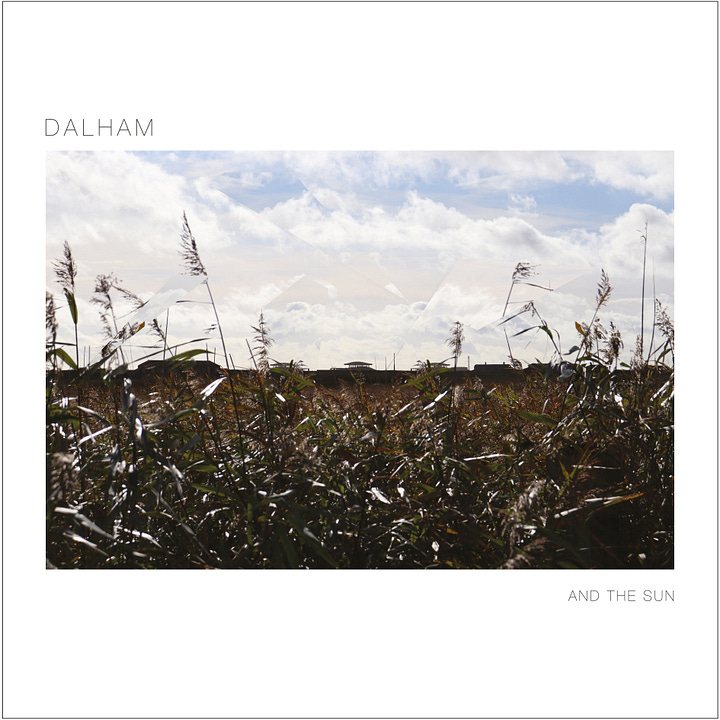
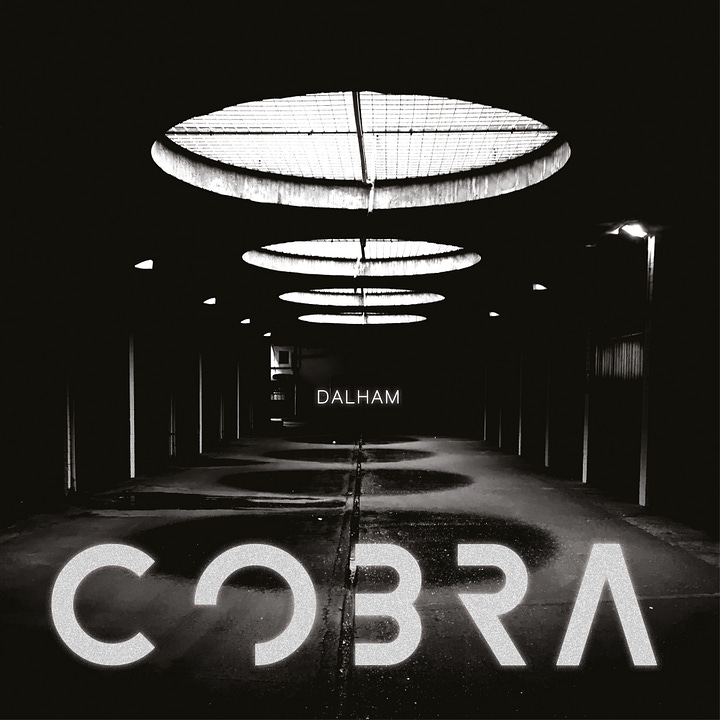
GOOD STUFF #4 / #5
DALHAM ‘Cobra’ / ‘And The Sun’ (Castles In Space)
And just when you were thinking it’s been something of a quiet year for CiS and how nice it is to see them pop up with their new CD imprint, up they bloody well pop again with with a vinyl double bill from Dalham. Three releases on the same day. Your wallet is going to feel this. A bit like double denim, only double Dalham, it has been a while since we’ve heard from London-based Jon Michaelides. There was a single, a 12-inch EP called ‘Alive In Wonderland’ last year, but before that we’re all the way back to 2022 and ‘Funf’ for the last Dalham long-playing offering. And then like buses two turn up at the same time. Do buses still do that? It’s been a while since I’ve had to regularly travel by bus I have to say.
“I always think that Jon is a truly unique artist in that I never hear anything like what he does from anyone else,” says Colin at CiS. And if a further ringing endorsement were needed Ridley Scott's production company have picked up several of these tracks for a Netflix documentary. The two releases are standalone works in that they’re being sold separately, but the label says “they are an intertwined set of works… configured with his unique sound palette across two interrelated LPs”.
We’ll tackle them in alphabetical order, ‘And The Sun’ first. I’ve read the notes, several times, and I’m still not sure what they mean. It is standard Dalham though, “textual musings on existential themes” the good folk at Juno call it. Jon’s notes talks about AI’s nascent consciousness and how capable it is of understanding its creators “who often hold logic and superstition within themselves” and “how will humans comprehend its hallucinations?”. Existentially there’s a bit that goes “And the Sun, a ball of hot plasma oblivious to our existence continually burns hydrogen until it runs out and swallows its three closest neighbours”. Yup, not entirely sure either. The opening cut, ‘Vorei’ is great, you can understand why Ridley Scott came calling. It’s huge and pensive, delicate and warm, it ebbs and flows, a thre-note refrain shimmers and builds as a melody picks its way over the top. Big stuff. Of the two albums, this one is the film soundtrack. A track like ‘Kristall’ is classic Dalham. There is a Vangelis-y leaning there, those huge melodic chimes, and on ‘Chalk’ he leans popwards with a warm melody and rattly drums, it’s clever, it sounds busy while being actually quite minimal. Colin is right, no one sounds like Dalham.
‘Cobra’ is one of those records whose theme has you taking a step backwards and pausing for thought. “On a remote gravel-covered spit of land on the east coast lie the abandoned buildings of a government facility for weapons testing and experiments with radar” say the notes. Oh aye, here we go. Is it? It seems it was. “Cobra Mist” was the codename for an “over-the-horizon” radar station at Orford Ness in Suffolk, from where Jon hails, so you know, all real. It’s a much more urgent, kind of sinister-sounding record, there’s the sweeps and judders of ‘Buran’ that give way to louche beats, the hectic arpeggiations of ‘Progress Report’, the marching beat and musical Morse code stabs of ‘Backscatter’. As I type, I think ‘Cobra’ is my favourite of the two, but that’s flip-flopped all week. It’ll be ‘And The Sun’ soon. Good job you don’t have to choose one or the other, just get both. And if you do you get a signed, limited edition risograph print too.
***ADVERTISE HERE***
Email moonbuildingmag@gmail.com
THE ROUND UP’S HANDY ROUND UP



I always look forward to new work from Andrew Spackman no matter what pseudonym he’s using. You may know him as Sad Man, as here, or Dark Jazz Project or Cars From The Future. Sometimes he’s even just Andrew Spackman. On Sad Man’s ‘Art’ (Cruel Nature), he responds to a short story he wrote about fellow Midlander, the surrealist artist and painter Emmy Bridgewater and the ideas and visual themes in her 1970 collage ‘Garden Of Pleasure’. Each track is the soundtrack to chapters from the story and follows “the potential for surrealist approaches in music making”. He says that, “ultimately, the album tries to express the idea of freedom from established norms, both sonically and structurally, a dream of ideas and chaos.” It is indeed just that. Last week we were enjoying the wares of Ancient Psychic Triple Hyper Octopus who embrace the failures and glitches of AI’s deep learning, here Andrew follows almost similar lines, it’s not nearly as musically weird, but it is out there. The opening 11-minute almost decends into what almost sounds like the ‘Doctor Who’ theme halfway through. BBC 6 Music are fans, so you know.
‘Zoomies’ (Rainbow Bridge), a third Inwards long-player from Worcester-based Kristian Shelley, finds him collecting together a bunch of tracks that were inspired by our canine friends. The Moonbuilding cat is known to have some properly mad zoomies sessions, so you know, it’s not just for the dogs. The tracks here are upbeat experimental dance tunes collected over a period of years that sound like they should be radiating out of Planet Mu. Kristian says the album came about in a bid to make more danceable music for live shows. “I was unable to avoid the classic Inwards weirdness,” he says, “so they have ended up somewhere in between experimental Inwards-ness and club-based bangers.” The album is dedicated to his beloved Golden Retriever Keira who sadly departed in 2022 and the track titles are all taken from her illustrious family tree and there’s some proper Cruft’s dog names there. ‘Meadow Sweet Happy Ishka’ is good, ‘Tokeida Outlaws Floozy’ is better. Both tracks are utter bangers. Like this stuff very much.
I really love that North Sea Radio Orchestra’s ‘Special Powers’ (Believer's Roast) is released on “limited edition 12-inch extra special black vinyl”. That’s classy, I like their style. So North Sea Radio Orchestra have been around since 2002 “rehearsing and performing in old churches tucked away in the heart of the City Of London”. Sounds great doesn’t it? The release notes say that “NSRO are very much a part of the ‘Cardiacs Family’ of bands and musicians, having personal and stylistic ties, harmonically and melodically, to Cardiacs and the music of the late Tim Smith generally”, which kind of gives you an idea where they’re coming from. Kinda. This is a sixth studio album written and produced by band leader Craig Fortnam and it feels like it lives in a whole musical world all of its own. The songs are soaked in uplifting melodies and veer from the nu classically driven ‘Mansions In Eternity’, to the folktronic ‘Hearty’. Someone said it was “part Robert Wyatt, part early Kate Bush, part medieval”. Elsewhere it says “file under psych/folk/pop/post-punk chamber music”. Which is about right. There’s some of all of that in here. There’s some beautiful songwriting/composing going on here. And anyone who lives in their own little world is very much alright by us. Well worth checking out.
‘LOVE AND FURY: THE LIFE, DEATH AND LEGACY OF JOE MEEK’ Darryl W Bullock (Omnibus)
One of my absolute favourite issues of Electronic Sound during my rein was Issue 62 from early 2020 featuring Joe Meek on the cover. The excellent John McCready wrote the cover story, and it was a whopper, certainly the longest cover feature during my time. John filed 12,000 words. But it wasn’t for the sake of it. We felt we needed to give the story that sort of space to tell Joe Meek’s incredible tale in its entirety.
As if to reinforce that point, the late Darryl W Bullock’s ‘Love And Fury: The Life, Death And Legacy Of Joe Meek’ is likewise a mighty tome. At nearly 400 pages, it’s not the sort of the thing you want to drop on your toe. It’s that big because, well, you need that sort of room to tell Joe Meek’s incredible tale in its entirety.
Before we get to the book, we should take a moment to remember the author who died suddenly at home in Cumbria on 23 December 2024. Darryl W Bullock was a proactive LGBTIQ+ advocate and a leading figure in Bristol’s gay community (he was one of the first to have a civil partnership followed by the UK’s first gay divorce). He leaves behind a fine body of work as an author that highlights the relationship between music and the gay community. ‘David Bowie Made Me Gay: 100 Years Of LGBT Music’, ‘The Velvet Mafia: The Gay Men Who Ran The Swinging 60s’, ‘Pride, Pop And Poltics: Music, Theatre And LGBT Activism, 1970-2022’ and ‘Queer Blues: The Hidden Figures Of Early Blue Music’ are all mighty in their research, insight and scope, not to mention beautifully written.
Darryl was just 60 when he died and had recently moved to Cumbria with his husband Niall. His death is a terrible loss and it’s beyond sad that this book was published posthumously. With his pedigree, there was no one better to write about Joe Meek whose life as a gay man in the 60s was not an easy one.
The thing about Joe Meek’s tale is that, as John McCready succinctly put it in his Electronic Sound piece, the stories of his recording session alone “would be fantastic enough without rumours of black magic, gangland threats and a pill-popping climax of paranoia, rapidly declining fortunes and murder”. He was often referred to as the British Phil Spector, tragically, not only for his magical way with sound, but murderous with a shotgun too. More of which shortly. It’s safe to say this is not the sort of story you usually get from electronic music artists. You rarely get stories like this in the most rock and roll of circumstances.
And so the book itself. I really like how Darryl very quickly gets down to business. There’s a little Meek family history, enough for context, and likewise enough preamble to set up Joe Meek’s tale, but by page 39, he is already plotting the setting up his own studio and discovering a whole new stable of artists. I love the kind of detail the book goes into. For example, growing up in Gloucester, Joe Meek was called up to the RAF aged 19 and became a radar operator, which suited his obsession for wires and valves. He’d been building TV sets from scratch in his teens and an RAF training only helped develop the skills he would be putting to good use once the war was over. As a conscript he was stationed in Yatesbury in Wiltshire for training. It turns out that also stationed at Yatesbury was one Brian Hodgson, who would go on to run the BBC Radiophonic Workshop. No idea if they met, or their paths crossed, but the thought is a tantalising one.
I also love the connections Darryl makes. For instance, in April 1956, Joe Meek engineered a session by jazz trumpeter Humphrey Littleton, recording a track called ‘Bad Penny Blues’. Meek’s mix was radical, he boosted the bass, brought the drummer’s brushes to the fore, added distortion to the piano and compression to the horn work. Littleton hated it, but it became the first British jazz record to become a Top 20 hit and was the best-selling jazz record of the year, not to mention singlehandedly kick-starting the countrywide jazz scene that grew hand in hand with the new-fangled rock and roll sound coming from the States. But there’s more. The single was bought by a cotton salesman and part-time jazz band leader in Liverpool called Jim McCartney. “Twelve years later,” writes Darryl, “his son would recall the tune and it would act as inspiration for The Beatles’ international hit, ‘Lady Madonna’.” Not bad for an engineer on a company wage.
As you would expect, Darryl puts Joe Meek’s homosexuality into the kind of the context I don’t think we’ve seen before. You can feel the fear a gay man living in a world where your sexuality could land you in prison must have felt. Prison for Meek, who at the peak of his powers was regularly turning out smash hits such as ‘Johnny Remember Me’ and ‘Telstar’ from his flat/studio above a leather goods shop at 304 Holloway Road, would have been catastrophic, not just for him personally, but for his career too.
So the story of his arrest for cottaging in a public toilet on the Holloway Road is pretty shocking. He was caught in a police sting on 11 November 1963, by which point ‘Telestar’ had been a huge hit. Joe Meek was incredibly famous, the cops couldn’t believe their luck. He was a powerful man and not alone in being gay in the swinging 60s. Opportunities in more private circumstances would have been available to him. Why he chose to risk everything like this was unfathomable. The story is that he was arrested in the toilet after smiling at an older man, much to his indignation. “I don’t go smiling at old men!,” he told a friend, “It’s the young chickens I’m after.”
Joe Meek never really recovered from the arrest, he was front-page news after which he was subjected to blackmail and victimisation as a result of which his mental health took a severe nose-dive. The event marked the beginning of a slide into madness and paranoia that resulted in the utterly tragic ending that saw Joe Meek shoot dead his landlady before turning the shotgun on himself. Even that story isn’t without its theories, the wildest of which was that he was murdered by The Krays. Hollywood couldn’t have made it up.
The final chapter of the book is fascinating. In it Darryl talks about the legacy that has unfolded since that tragic day in February 1967. He looks at how mental health support has changed in the music industry in the last 60 years, how interest in Joe Meek’s work was revived and rounds up the lives of the various characters who surrounded him as well as telling the story of the famous “lost” tea chest tapes that surfaced a few years ago in the hands of Cherry Red.
Joe Meek was a flawed individual, but his genius, the music he made and the tales that came with it are incredible. Darryl tells that story so well, so thoroughly, and with a level of detail that often deserves a round of applause. But it’s a sad story too. Especially poignant is the fact the author isn’t around to enjoy the praise being heaped on this fine volume. But what a legacy both of these people left.
A MESSAGE FROM THE MOTHERSHIP
***MOONBUILDING ISSUE 5 IS OUT NOW***
Bloody hell! Will you look at that? MOONBUILDING, Issue 5, is a scorcher. On the cover, depicted by the untouchable Nick Taylor, is the awesome Polypores. In our free-wheeling chat we get right under the hood of Stephen James Buckley’s musical operation, offer up a listening guide to help you safely navigate his extensive back catalogue and we also have an whole new Polypores album exclusively for your ears.
Yes, we are giving you a not-available-anywhere-else new album called ‘The Album I Would Have Released In An Alternate Universe’, which happens to be the sister recording to his recent Castles In Space opus ‘There Are Other Worlds’.
Want to try before you buy? No bother. If you’d like an extract from our Polypores cover feature interview where Stephen Buckley talks about his formative influences, which probably aren’t what you’d image, you can do that here… moonbuilding.substack.com/p/issue-28a-26-july-2024
Elsewhere in the issue there’s a profile of our new favourite label Mortality Tables, Pye Corner Audio gets in on the There’s A First Time For Everything act, we round up an absolute mountain of recent releases and serve up our thoughts on the best albums from the last few months, including Loula Yorke and Warrington-Runcorn New Town Development Plan. There’s a column from The Orb’s Alex Paterson, which starts off about Jah Wobble and ends up about Andrew Weatherall, and an all-new instalment of Steven Appleby’s brilliant Captain Star cartoon strip.
This issue also features a pile of great book reviews (that’s great books, reviewed, rather than the reviews being great, although they are pretty good). There’s a cracking chat with Justin Patrick Moore, the author of ‘The Radio Phonic Laboratory’, and a bonus chinwag with the world’s finest music journalist, Mr Simon Reynolds.
The virtual shop doors are open at moonbuilding.bandcamp.com for your purchasing pleasure. This magazine ain’t going to buy itself.
Moonbuilding Weekly is a Castles In Space publication.
Copyright © 2025 Moonbuilding



